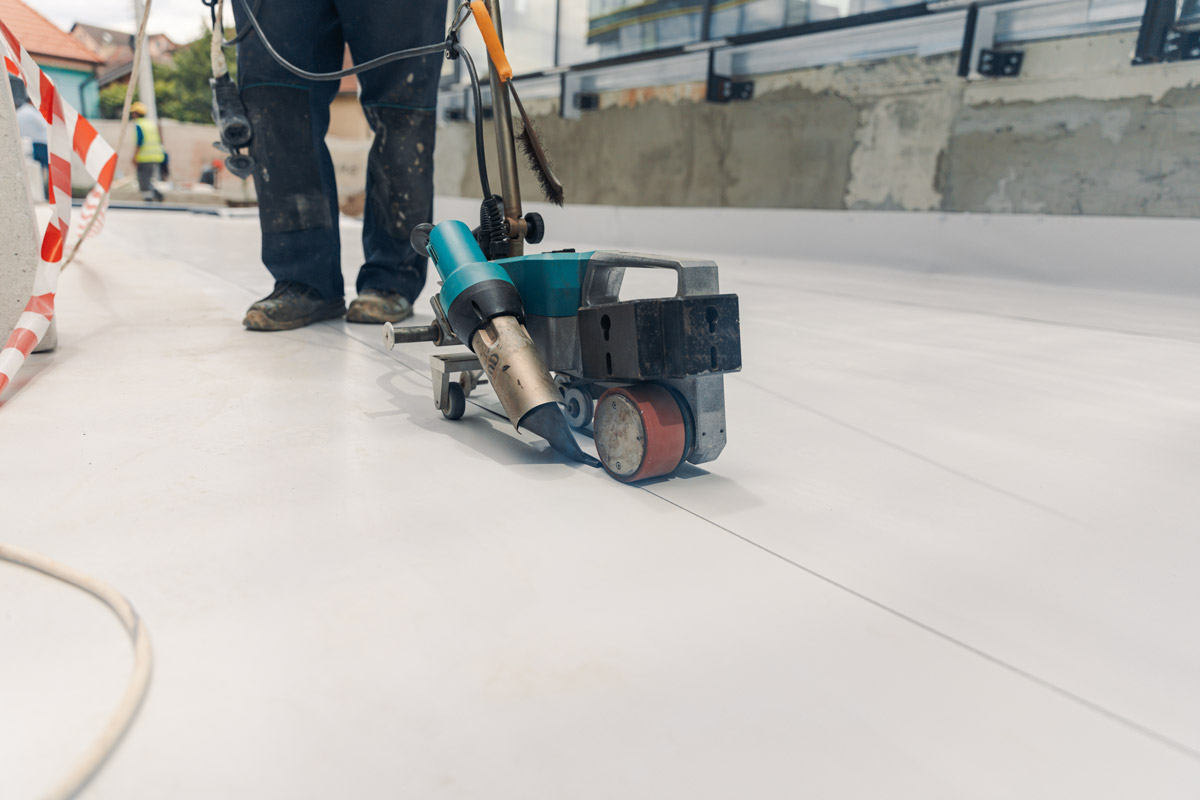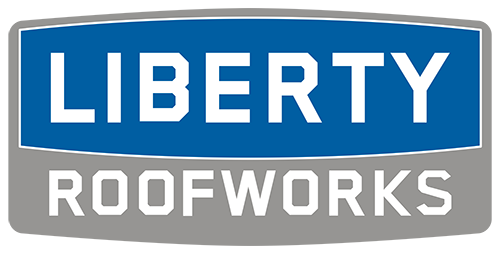PVC Roofs: Everything You Need to Know for Long-Lasting Roofing Solutions
Are you trying to find a dependable and long-lasting roofing solution? Because of their better durability and protection, PVC roofing have recently grown in popularity. Everything you need to know about PVC roofs, including their benefits, varieties, methods of installation, upkeep, pricing, and repairs, will be covered in this blog.
We’ll also contrast PVC and TPO roofs and respond to some of the most frequently asked questions concerning PVC roofing. Let’s get going.

Contact Us Today
Let Liberty Roofworks’ qualified roofers in Charlotte, North Carolina handle your roofing needs. For your convenience, we offer a free roof inspection and quote.
Liberty Roofworks
1397 Cilantro Ct.,
Tega Cay SC 29708
Monday-Friday | 8am-5pm
(704) 463-8177
Introduction to PVC Roofs
A form of roofing membrane composed of polyvinyl chloride is known as PVC roofing (PVC). It is a single-ply membrane that is strong, lightweight, and exceptionally resistant to fire, UV light, and severe weather. Furthermore, because of their greater durability and protection, PVC roofs are increasingly being chosen for commercial and industrial buildings.
Advantages of PVC Roofs
PVC roofs are a great option for commercial and industrial buildings due to their many benefits. Some of the most noteworthy advantages of PVC roofing are listed below:
- With the right upkeep, PVC roofs are extremely robust and can last up to 30 years.
- Extreme weather, UV rays, and fire all pose little threat to them.
- This kind of roof is portable and simple to install.
- The PVC roof may reflect up to 85% of the sun’s rays, which helps to save energy and save costs.
- They also require little upkeep and are simple to fix.
Different Types of PVC Roofs
PVC roofs come in many different varieties. Here are a few of the most typical:
Standard PVC Roof Membrane
The typical single-ply PVC roofing membrane is made of this material. Energy Star-certified and created to offer long-term water damage protection and heat reflection, market-leading PVC membrane roof systems.
Polyester serves as reinforcement between the two membrane layers in this PVC roofing system. PVC that is standard is often installed using adhesives or fasteners, and additives increase flexibility.
KEE PVC Roof Membrane
Rigid components that are used to create PVC roof membrane materials must be modified to make them more flexible. The liquid plasticizers required to achieve this may evaporate with time, which is why KEE (Ketone Ethylene Ester) was created. In comparison to several liquid plasticizers, the concentrated polymer utilized in KEE PVC membrane roofing materials works better.
A PVC KEE membrane extends the lifespan of a roof and preserves its flexibility longer. This kind of PVC membrane roofing material can be used alone or with asphalt and over time efficiently deflects sunlight.
PVC Roof Membrane – Fleece Backed
The PVC membrane’s bottom is joined to premium fleece pieces to support a flat or decreased roof. Fleece-inclusive goods are simple to install because they can be laid out straight on the rooftop.
This technique offers a strong protective PVC roofing covering while saving money on labor. Furthermore, adhesives or fasteners can be used to fix a PVC roof system that employs fleece-backed materials.
Why Do You Need a PVC Roofing Membrane?
PVC roofing membranes are something that homeowners should first understand why they are necessary and how to use them. Your roof is said to have a low slope if its pitch is less than 2:12.
Additionally, the problem is that water does not drain off a flat roof or low slope as quickly as it does off a high pitch. It calls for a waterproof roof material as a result.
Numerous roofing materials are disqualified by this criteria, most notably asphalt shingles since they cannot handle standing water. Asphalt shingles should not be installed on a rooftop pitch of less than 2:12 in accordance with the installation instructions and building specifications provided by the shingle dealership.
As a result, PVC roofing membranes are required for flat or low-slope roofs.

PVC Roof Installation
Any qualified roofer can install PVC roofs because they are comparatively simple to do so. Typically, the roof is attached to the building with roofing glue, and then the edges are sealed with a waterproof sealer. To guarantee that the roof is installed properly and to prevent any potential issues, it is crucial to contact a skilled roofer.
PVC Roof Maintenance
These PVC roofs require extremely little maintenance and care. In most cases, all that is required is a yearly inspection and cleaning to get rid of any dirt or debris. To make sure the roof is in good shape, it is crucial to check it for wear and tear or damage and to make any necessary repairs.
PVC Roof Repairs
ensuring the roof is in good condition by performing regular inspections and any necessary repairs. PVC roofs may be repaired quite easily by any qualified roofer. In most cases, all that is needed is to repair any broken or worn-out parts and watertight seal any holes or cracks.
Cost of PVC Roofs
PVC roofs typically cost more than other roof types, but they are also tougher and stay longer. PVC roof prices vary based on the scope and difficulty of the project. The type of PVC roof, as well as the installation and maintenance costs, will also affect the final cost.
But maybe the most important information for homeowners is related to the PVC roofing membrane. Naturally, this is what it will set you back.
For smaller projects, allocate between $14.00 to $17.00 per square foot for a PVC roofing membrane, and roughly $12.00 per square foot for larger ones. Consider the fact that a number of variables affect how much a roof costs, making it impossible to provide a precise estimate.
A big cost factor is the type of insulation installed beneath your PVC roofing membrane. Applying fabric insulation and attaching the membrane with adhesive would be less expensive than using thick enough insulation to cover the entire structure.
The dimensions of the roof where the PVC membrane will be applied are another crucial factor. On smaller projects, the cost per square foot will be at the higher end of the designated price range.
When it comes to bigger roofing jobs, the price per square foot decreases.
What’s the Lifespan of a PVC Roofing Membrane?
The lifespan of a roof establishes the return on investment and makes it possible to foresee when it will need to be replaced in the future. If installed properly, the PVC roofing membrane can last for about 25 years.
Giving a PVC roofing membrane 25 years is a great idea, but it doesn’t guarantee that it will last that long. A roof’s longevity is affected by a number of things (including PVC).
These variables include the weather, the quantity of direct sunlight that reaches it, and the effectiveness of the installation. Your PVC roofing membrane should last as long as possible if the roofers install it correctly.
One of this type of roofing’s most important advantages is proper installation. You may spend far less on pricey upkeep and repairs. Additionally, regular maintenance, such as the following, will increase the lifespan of your PVC rooftop:
Proper drainage, which includes avoiding standing water because this is a regular problem with flat rooftops, is essential for extending the life of the PVC roof. Another essential part of maintaining the PVC roofing membrane is checking for gaps and seams after a storm. Before a leak develops, it is important to inspect the roof for any wear or damage to make sure that no further damage or time is lost.
TPO vs. PVC Roofing
TPO and PVC are two of the most common types of roofing materials. Both materials are highly durable, fire-resistant, and long-lasting. TPO is typically less expensive than PVC but is less durable or long-lasting than PVC. On the other hand, PVC is more resistant to UV radiation and extreme weather conditions and is generally more expensive than TPO.
PVC and TPO are usable in commercial, industrial, or institutional roofing applications. However, knowing each material’s distinct benefits and drawbacks is vital when deciding between the two. Furthermore, once you’ve selected, you should seek a reliable and experienced supplier to guarantee you get a high-quality product.
Frequently Asked Questions about PVC Roofing
Here are some of the most commonly asked questions about PVC roofs:
How Long Do PVC Roofs Last?
PVC roofs can last up to 25 years with proper maintenance.
Are PVC Roofs Energy-efficient?
Yes, PVC roofs can reflect up to 85% of the sun’s rays, which can help reduce energy costs.
How Much Do PVC Roofs Cost?
The cost of PVC roofs varies depending on the size and complexity of the project. Generally, PVC roofs cost more than other types of roofs, but they are also more durable and long-lasting.
Are PVC Roofs Challenging to Install?
No, PVC roofs are relatively easy to install, and your nearby expert roofer can do it quickly.
Due to its high protection and longevity, PVC roofs are a great option for commercial and industrial structures. They are also energy-efficient and low-maintenance, and have excellent fire, UV, and extreme weather resistance.
PVC roofs are generally more expensive than other types of roofs, though their price might vary based on the scope and intricacy of the project. Call us for knowledgeable assistance if you have any inquiries about PVC roofs in Charlotte, North Carolina.
